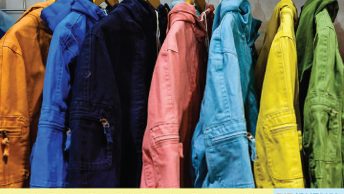 Consumers are easily manipulated because:
Consumers are easily manipulated because:
- they are bad at math;
- they shop with their heart rather than their head.
This means you might be wasting your money (that is not so easy to earn) because you are being manipulated.
Do you think this is fair? Would you like to be sure you are spending your money because you want, not because someone wants you to? Do you want to save?
Then let’s learn which tricks sellers may be using to manipulate your shopping behavior.
Shopping momentum

Shopping momentum occurs when a buyer literally “can’t stop”‘: the first purchase produces a psychological impulse that makes him / her buy more.
How this works: Shopping has two phases: deliberation and implementation. The actual buying moves us from deliberation to implementation phase: we continue buying without returning to the deliberation stage.
How not to be tricked: break the shopping momentum. A good way to do that is to pay by cash and use several envelopes / pockets where you take the money from:
- counting cash makes you think: you thus return to the deliberation stage;
- paying from different envelopes forces you to return to the deliberation stage to think if the purchase was a good idea.
Confused consumers

A sales technique called “disrupt-then-reframe” can trick consumers into buying.
How this works: the seller first presents a confusing sales pitch to a customer and then restates the pitch in a more familiar way. Meaning, they first utilize technical jargon, complex terminology or large product assortments and thus “attract the consumer’s attention” who becomes eager to ‘understand’ the pitch.
How not to be tricked: in this case, knowledge is your best weapons. Just remain cool-headed and realize you are being cheated.
Double discounts

Ironically, shoppers are more attracted to the double discount, even though it involves less savings. An average American is not very good at maths, which is why a sale offering “20 % off the original price plus an additional 25 % off the already-reduced sale price” is effective.
How this works: the maths behind this is both complex to explain and spot. Say, one store offers 45% discount, while another one offers 25% + 25% discount for the same product. Which one do you feel is better? The second one? Wrong! In reality, the second offer is about a ~43 percent discount, because the second discount is taken on the reduced amount after the first discount.
How not to be tricked: well, use a calculator! Counting your money is the best way to save it. So counting ho much you are actually saving will help you understand who is honest and who tries to trick you.
Post images by jpockele, Cosmic Kitty, Jesse757, artykle.com












